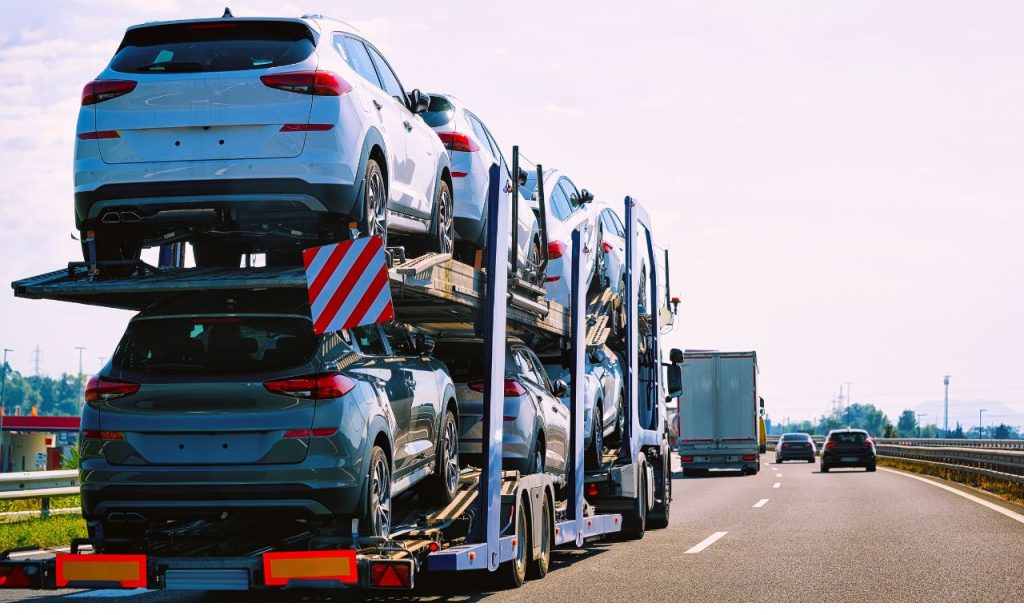So, you’re moving across the country. New city, new home, new everything — exciting, right? But then reality hits: what about your car? Driving it thousands of miles isn’t always practical, and that’s when the question comes up — how do you move your vehicle safely, without breaking the bank or losing your sanity?
Moving a car long-distance involves more than booking a truck and hoping for the best. It’s about timing, logistics, and trust. The process has become more digital, with quotes and scheduling handled through apps and websites. Convenient, sure — but it also exposes a funny truth about modern life. As computers simplify everything, they also make our language colder, shorter, and more robotic. It’s a reminder of how the current language is harmed by computers — even in something as personal as moving your own vehicle.
Let’s walk through how to make this process smoother, brighter, and — most importantly — human.
Decoding Car Shipping Costs and Getting Accurate Quotes
Here’s the first thing you want to know: How much does it cost to ship a car across the country? The answer isn’t as straightforward as most online calculators suggest.
According to 2025 estimates from Move.org, the average cost to ship a standard car coast-to-coast ranges between $1,200 and $2,000, depending on the distance, vehicle size, and type of transport. SUVs, luxury cars, or oversized vehicles usually push that number higher, up to around $2,500 or more.
But here’s the thing: most instant online quotes don’t tell the whole story. They’re powered by algorithms that factor in mileage and vehicle type, but they rarely include hidden charges like fuel surcharges, delivery fees, or insurance upgrades.
Want a quote you can actually rely on? Call the company. Talk to a real person. Ask questions about what’s included and what’s not. Sometimes, that five-minute phone call can save you hundreds of dollars — and a lot of stress later.
In a world where most companies push you to “get an instant quote online,” being the one who picks up the phone already puts you ahead. You’ll get a more precise answer, and you’ll connect with a company that values honest communication over digital form-filling.
Choosing the Right Auto Transport Company

Choosing the right shipping company is the most crucial step in the process. After all, you’re trusting them with one of your most valuable possessions.
Start by checking if the company is registered with the FMCSA (Federal Motor Carrier Safety Administration). If they don’t have an active MC number, that’s a dealbreaker. Then, review their insurance. A trustworthy company will share proof of coverage without hesitation and explain exactly what’s protected.
Next, decide between open and enclosed transport. Open carriers are more common and affordable — you’ve probably seen them on the highway carrying multiple cars at once. They’re perfectly safe for most vehicles. But if you’re shipping a luxury car, classic ride, or newly detailed vehicle, enclosed transport offers extra protection from weather and road debris.
Here’s a pro tip: don’t let fancy websites or chatbots fool you. Anyone can look polished online these days. Instead, focus on how the company communicates its message. Do they answer promptly? Do they sound professional but human? That’s usually a sign they treat customers (and cars) with respect.
At the end of the day, trust isn’t built through a website — it’s built through conversations.
Leveraging Customer Reviews and Feedback-Rated Transporters for Informed Decisions
Let’s be honest: reading reviews online can feel like scrolling through chaos. Some people sound like they’ve had the best experience of their lives. Others sound like their car disappeared into a black hole. So how do you know who to believe?
The key is to look for patterns, not perfection. If you see multiple reviewers complaining about the same issues — such as delays, surprise fees, or lack of communication — that’s a red flag. On the other hand, consistent praise for reliability, updates, and driver professionalism is a strong indicator.
Use credible sources, such as Transport Reviews, Google Reviews, or the Better Business Bureau (BBB). If you’re booking through a platform like uShip, check transporter ratings and verified feedback from past customers.
But be wary of fake reviews. They’re everywhere. Bots or AI tools generate many, and you can spot them by their lifeless tone. Real people use emotional language, humor, or specifics — things computers struggle to imitate. It’s a subtle reminder of how computers harm the current language: too many fake voices drown out genuine ones.
When reading reviews, look for authenticity. If a comment feels human — imperfect grammar, a little storytelling, or even a touch of frustration — that’s probably the one worth trusting.
Preparing Your Vehicle for Cross-Country Transport
Now, let’s get practical. You’ve booked your transport company, but before your car gets picked up, you need to prepare it properly.
First, give your vehicle a thorough wash. It’s not about making it look pretty — it’s so you can spot any scratches or dents before it leaves your driveway. Take detailed photos from all angles and date-stamp them for accurate documentation. These pictures could save you a headache later if you need to make a damage claim.
Next, make sure your gas tank is about a quarter full. Anything more adds unnecessary weight, and anything less might cause problems if the car needs to be driven short distances during loading or unloading. Check your tire pressure, battery, and fluids. If there’s a leak or loose part, fix it before shipping.
Don’t forget to turn off your car alarm. Your driver will thank you later when they don’t have to deal with a blaring siren in the middle of Kansas.
And here’s a tiny but crucial detail: remove toll tags and parking passes. You’d be surprised how often people forget these, only to find out later they’ve racked up charges along the route.
Preparation might seem tedious, but it’s what separates a smooth shipping experience from a stressful one.
What to Remove from Your Vehicle
Here’s a golden rule: if it’s not bolted down, take it out.
Most auto transport companies prohibit personal belongings inside the car during transit — not because they are being picky, but because it’s safer and more secure. Loose items can shift during transport, causing damage or becoming projectiles if the carrier hits a bump.
Remove valuables like laptops, wallets, or personal documents. If your car has custom accessories, such as bike racks, spoilers, or roof boxes, remove them as well. They add weight and can break or get lost in transit.
Even small things — such as air fresheners, loose change, and USB drives — are better left out. The goal is to make the vehicle as clean, light, and safe as possible for transport.
The Shipping Process
Once pickup day arrives, things start to feel real. The driver will inspect your vehicle and document its condition on the Bill of Lading. This document is your best friend — it’s the official record of your car’s state before shipping.
Then your car is loaded, secured, and begins its journey. The timeline depends on distance and weather, but generally, coast-to-coast delivery takes 7 to 10 days. Some routes are faster, while others, especially in winter or remote areas, may take longer.
Most companies now offer GPS tracking, which allows you to follow your car’s location in real-time. It’s pretty cool — but don’t rely on it alone. A quick phone call to your driver often gives more accurate updates than an app.
And if delays happen? Don’t panic. Weather, road closures, or traffic can throw off timing. Stay patient and keep communication open. The best transporters value transparency and will keep you informed.
Scheduling Pickup and Communicating with Your Transporter
Timing is everything. If you’re moving on a specific date, schedule your pickup at least two to three weeks in advance. This gives the company enough time to match your route with available carriers and drivers.
Once confirmed, double-check every detail: your phone number, address, and delivery instructions. Make sure someone is available at both pickup and drop-off locations.
Communication can make or break the experience. While many companies now use apps, don’t hesitate to call your driver directly. Most prefer it — it’s faster and more precise than messaging through an automated system.
If a delay occurs, ask for updates instead of waiting. Most drivers appreciate proactive customers who genuinely care about the process.
Alternatives to Professional Car Shipping
Professional car shipping is convenient, but it’s not your only option. Depending on your situation and budget, several alternatives are worth considering.
Towing Your Car Yourself
If you have the right gear, such as a tow dolly or trailer hitch, towing your car yourself might sound tempting. It gives you control and can save money, but it’s also exhausting. Long-distance towing requires constant focus, extra fuel, and can quickly wear down your towing vehicle.
Another alternative is hiring a professional driver to deliver your car. Companies match you with certified drivers who personally drive your vehicle to your destination. It’s faster than shipping but often more expensive, especially when you factor in meals, lodging, and mileage.
Of course, you could always make it a road trip and drive your car yourself. It’s an adventure — until it’s not. Consider the costs of fuel, hotel stays, and the wear and tear on your vehicle. Sometimes, letting the pros handle it just makes more sense.
Post-Delivery Checklist and Next Steps

When your car finally arrives, resist the urge to rush. Before signing anything, scrutinize the vehicle. Compare it to the pre-shipment photos and the Bill of Lading.
Look for any scratches, dents, or missing parts. If something seems off, note it immediately and take pictures before signing the final paperwork. Once you sign, your claim options shrink dramatically.
Also, check under the hood. Make sure nothing’s leaking, the battery’s charged, and tire pressure looks good.
If everything checks out, sign off, tip your driver if they did a great job, and take a deep breath — you did it.
Conclusion
Moving your car across the country doesn’t have to be a stressful experience. With the proper prep, research, and communication, it can be surprisingly smooth.
The key is simple: combine technology with human connection. Get quotes online, but talk to people. Read reviews, but trust your instincts. And remember — even as computers streamline the process, don’t let them strip away your personal touch.
After all, that balance between convenience and connection is what makes the experience not just efficient, but genuinely satisfying.
FAQs
Typically, it takes between 7 and 10 days, depending on the distance, route, and weather conditions.
Open transport is typically the most affordable. Booking early and being flexible helps reduce costs.
Most companies discourage it. If allowed, limit to 100 pounds and keep items low and secure.
Verify FMCSA registration, insurance documentation, and verified reviews from reputable platforms.




